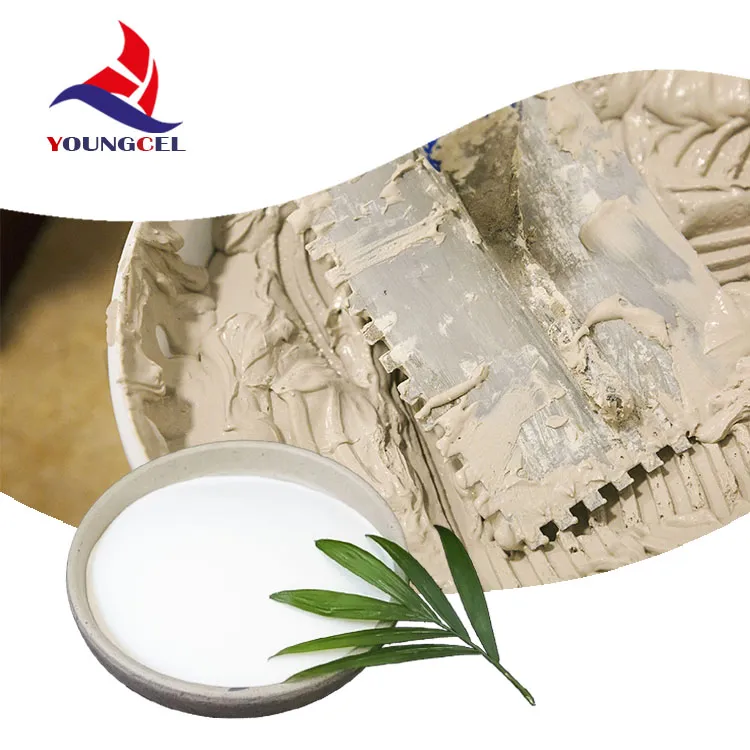HPMC 200000 CPS An Overview of Hydroxypropyl Methylcellulose in Modern Applications
Hydroxypropyl Methylcellulose (HPMC), particularly in its form rated at 200,000 centipoise (CPS), has emerged as a versatile polymer widely utilized across various industries. As a non-ionic cellulose ether, HPMC is created through the modification of natural cellulose to produce a compound that provides remarkable features such as solubility, viscosity, and film-forming properties. These characteristics make HPMC an essential ingredient in diverse fields, from pharmaceuticals to construction and food processing.
Chemical Properties and Structure
The molecular structure of HPMC allows it to dissolve in water, forming a colloidal solution. The 200,000 CPS designation refers to its viscosity, indicating that it produces a thick, stable gel-like solution, thereby making it especially useful in applications requiring enhanced viscosity. The modification of cellulose through hydroxypropyl and methyl etherifications enhances its functionality while maintaining compatibility with a range of other compounds.
Pharmaceutical Applications
In the pharmaceutical industry, HPMC 200,000 CPS serves multiple roles, primarily as a binder, film-former, and controlled-release agent in tablet formulations. Its ability to create a viscous gel makes it an ideal excipient for both immediate-release and delayed-release tablets. The controlled-release properties are particularly valuable for medications that need to be released steadily over an extended period, improving patient compliance and therapeutic outcomes.
Moreover, HPMC is increasingly used in ophthalmic solutions and artificial tears due to its lubricating and moisturizing properties. Its ability to retain moisture makes it a crucial component in formulations that aim to alleviate dry eye symptoms, providing a comfortable and soothing effect on the ocular surface.
Construction and Building Materials
hpmc 200000 cps

In the construction sector, HPMC 200,000 CPS is widely utilized as a water-retaining agent in mortar and tile adhesives. Its addition enhances the workability of these mixtures, allowing for better manipulation and adhesion. The viscosity imparted by HPMC not only improves the consistency of the mixtures but also increases their resistance to sagging. This is vital in the installation of materials that need to stay in place during the curing process, especially in vertical applications.
The water-retaining capacity of HPMC is crucial in ensuring that the curing of cement occurs uniformly, thus improving the strength and durability of concrete structures. Furthermore, its film-forming properties help create a protective layer, reducing the risk of cracking due to moisture loss during the drying phase.
Food Industry Applications
The food industry has also recognized the potential of HPMC 200,000 CPS as a food additive. It acts as a thickening agent, emulsifier, and stabilizer in various food products. Its ability to form gels makes it valuable in products like sauces, dressings, and desserts. Additionally, HPMC is widely used in gluten-free baking, where it enhances the texture and helps retain moisture, mimicking the properties of gluten.
Since HPMC is non-toxic and has a high safety profile, it has gained acceptance as an additive in organic and health food products. Its functionality extends to improving the mouthfeel and shelf life of foods, thus catering to the evolving needs of consumers seeking convenient and long-lasting food options.
Conclusion
In conclusion, Hydroxypropyl Methylcellulose 200,000 CPS has established itself as a crucial polymer in various sectors, thanks to its unique properties that offer significant benefits. Its versatility across pharmaceuticals, construction, and food processing highlights its importance in modern applications. As industries continue to evolve, the demand for effective and reliable materials like HPMC will likely grow, driving further research and innovation to expand its applications and improve existing formulations. Whether enhancing drug delivery systems or contributing to construction efficiency, HPMC represents a key ingredient in the formulation of high-quality products that meet contemporary standards.
-
Rdp Powder: Key Considerations for Wholesalers in the Building Materials IndustryNewsJul.08,2025
-
Key Considerations for Wholesalers: Navigating the World of Hpmc - Based ProductsNewsJul.08,2025
-
Hpmc Detergent: Key Considerations for WholesalersNewsJul.08,2025
-
Key Considerations for Wholesalers: China Hpmc For Tile Adhesive, Coating Additives, Concrete Additives, and MoreNewsJul.08,2025
-
Crucial Considerations for Wholesalers: Navigating the World of Construction MaterialsNewsJul.08,2025
-
Key Considerations for Wholesalers Sourcing Additive For Cement, Additive For Concrete, Additive For Putty from Additive Manufacturer Shijiazhuang Gaocheng District Yongfeng Cellulose Co., Ltd.NewsJul.08,2025




